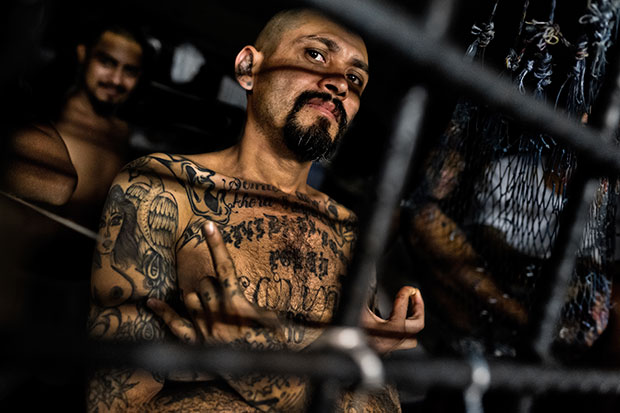You may not have heard of the Maras. Or Barrio 18. Or the Jalisco New Generation Cartel, or the Zatas, or the Knights Templar, or the Shower Posse. But you should have heard about them, says Ioan Grillo in his new book about transnational drug and crime gangs, because any one of them may have played a profitable and blood-drenched role in bringing you not only your weekend baggie of recreational powder, but also the gold in your earring, the lime in your gin and tonic, the avocado in your salad and even the steel in your Volvo.
These ‘gangster warlords’ are the new century’s international mafias. They originate in Central America, Mexico and the Caribbean, although now they have trading subsidiaries everywhere from Bombay to Brixton. It’s a business model that brings new force to the word ‘disruptive’, based as it is on bribery, torture, murder and ultra-pure crystal methamphetamine. And to date, they are unstoppable.
It is next to impossible to estimate accurately the extent of the warlord economy, and the number of lives it has consumed. The UN claims that the total illegal drug industry is worth $320 billion a year. In Mexico alone, government figures show that the crime cartels whose revenues come largely from drugs have been responsible for over 83,000 murders in the last nine years. Although all these figures contain an element of guesswork (and governments often overstate the size of their drug problems in order to squeeze more war-on-drugs funding from Washington), there is no doubt that since the 1980s something has turned a long-standing problem of localised Latin American gangsterism into a global phenomenon.
It started with cocaine. It was cocaine from Colombia and the fabulous profits it generated that built the multi-billion- dollar empires of the Medellin drug cartel, headed by the late Pablo Escobar; the Cali Cartel; and the Norte del Valle Cartel. In the early days cocaine was flown into North America in light aircraft, or bulk-shipped direct to Florida, until the Americans wised up. Today that doesn’t work: drugs have to be broken down into ever smaller consignments that are smuggled by individuals through a thousand backroad routes. The drugs wind down into Brazil and up through Central America and Mexico, and in the process they have promoted those countries’ street-corner crews and shakedown artists into fearsome murder machines that eventually get their claws into every part of the economy, from farming to mining.
Nowhere is worse affected than Mexico. Honduras may have a higher murder rate, the Jamaican gangsters may be madder, the Brazilian favela gangs may be more numerous, but Mexico has the biggest problem and today the problem’s name is methamphetamine — or crystal meth, the Breaking Bad drug.
Crystal meth is terrible stuff. Much more addictive than cocaine and much more destructive (essentially it sends you mad), it is also more profitable, and can be manufactured anywhere there is no law and garage space free — which means that it is most likely to be made close the the US border, in Mexico. It doesn’t only send its users mad: it does the same to its makers. The result is that Mexico has become infested with one after another gang of loopy, messianic and hyper-violent drug-making cults, and most recently a string of equally violent vigilantes who look little different from the drug gangs they are fighting.
Drugs are not the cause of this extraordinary level of violence. They are merely the accelerant. Nowhere are cocaine and crystal meth worth more than in the wealthy suburbs of the United States, but still the US does not have a serious domestic problem with billion dollar murder syndicates who routinely leave decapitated bodies on the streets. For the crime warlords to flourish you need to start with extreme poverty and a non-functioning justice system. Add drug dollars to that mix, and you get Mexico.
Grillo is a Mexico-based news reporter, and his book is as haphazardly written as most reporters’ books. But he has done sterling work on the front lines, from Brazil’s broken megacities to the insanely violent ‘garrisons’ of Kingston, Jamaica. He overstates the international reach of the warlords, and probably the extent of the drug economy in Central and South America as well, but his portraits of gangster societies living beyond law or even reason are starkly persuasive.
His rehab programme for healing the drug-addicted economies? Legalise the drugs, of course. That wouldn’t do anything to tackle what underlies the drug economy, but at least it would stop pouring petrol on the fire. Very sensible — and like many obviously sensible things it is also a dream. You might just as well put it in your meth pipe and smoke it.






Comments